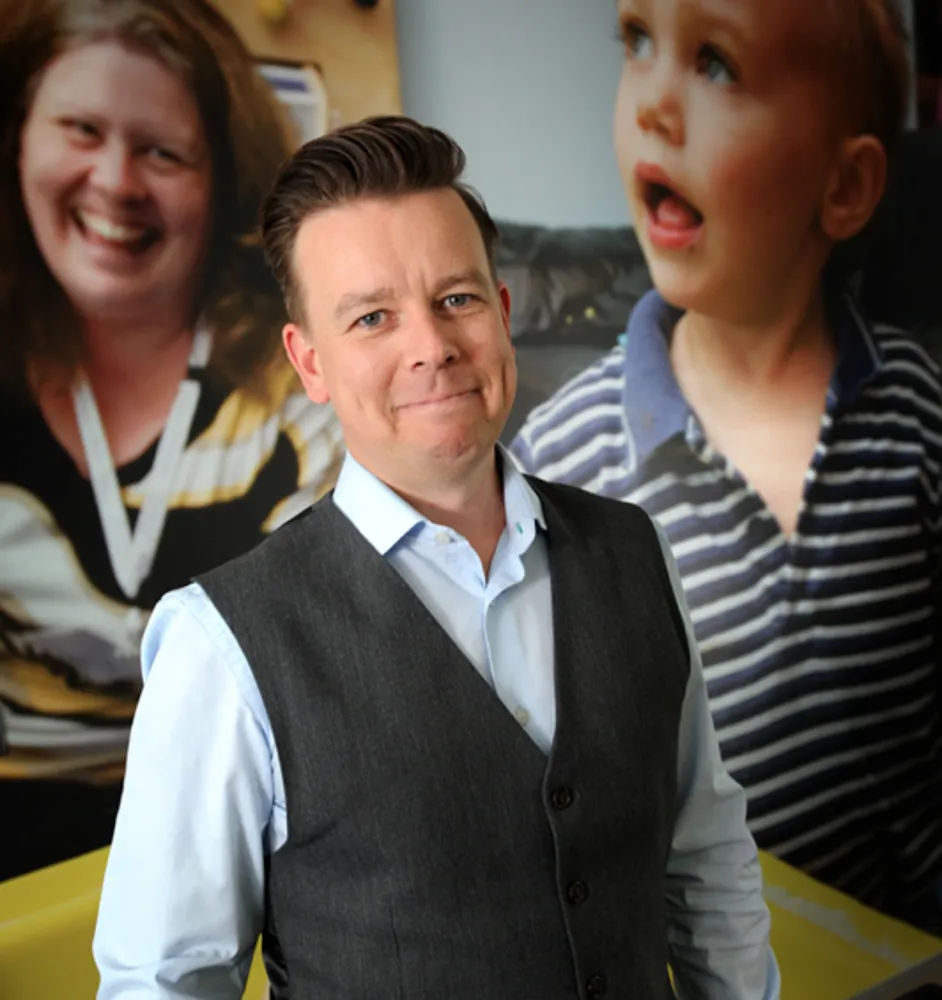Cutting fleet size, fuel bills and repairs means more money can be used to help vulnerable children, transport manager Matthew Chase tells Stephen Briers.
An inefficient fleet can slice money from a company’s bottom line, affecting profitability and cashflow in the short-term, and restricting its ability to be competitive in the longer-term.
For charities, an inefficient fleet can be even more serious – it limits their ability to help, protect and save lives.
Action for Children has reduced its annual fleet spend from £3.5 million to around £2.5m (including capital cost) in the four years since Matthew Chase was appointed transport manager. It’s money that can now be used to help vulnerable children.
Initially recruited as a consultant to consider future fleet policy, including whether the entire operation should be outsourced, Chase quickly identified a number of compliancy issues caused by the disparate nature of the charity’s business: 650 projects spread across the UK. His solution was to contact every project and request someone took responsibility for their local fleet.
His review also showed that outsourcing the fleet operation would potentially cost Action for Children hundreds of thousands of pounds, in part from loosening control over its 3,500 grey fleet drivers, who are scrupulously administered in-house. In addition, 2,000 staff are authorised to drive one of the charity’s 236 vehicles, all of which it buys outright, which requires firm management.
“Whatever happened, there was always going to have to be someone internally to be responsible for the fleet,” Chase says.
It ended up being him, ably supported by fleet controller Lucy Claughton; the subsequent savings they have achieved have more than justified that decision.
The first step in the fleet appraisal was to reassess the qualifying criteria for receiving a company car. The policy had been set at a minimum of 500 business miles a month (6,000 a year) but when Chase crunched the numbers he found that many employees were travelling a lot less than that. However, their high private mileage meant cars were still hitting their replacement cycle thresholds.
“We also looked at the 45p per mile rate versus the company car rates,” Chase says. “The modelling showed that the breakeven was 17,000 miles, so we set our limit at 12,000 miles – above that and staff qualify for a company car.”
Within 12 months, 38 cars had been taken off fleet, saving £90,000 a year. Staff were given the option of buying the cars at CAP average value and becoming a grey fleet driver while others opted to use rental cars.
Both options are much cheaper than buying, insuring and servicing a vehicle, according to Chase.
“We also removed fuel cards at the same time. We identified it as a risk not being compliant with HMRC so we switched to pay and reclaim at AFR,” he says.
“Overall, our fuel costs have reduced from £50,000 per month to £15,000 per month. Some of this is due to the reduction in fleet size, but a lot is from changing from the fuel cards.”
He still has 26 drivers who fall between 6,000 and 12,000 annual business miles. As they come off the policy, Action for Children will save another £50,000 a year – a total saving of £140,000.
“We had to find a way to save money and this is where the money was in the fleet department,” Chase says. “Transport has to be efficient; it can take any margin out of a contract if it’s not.”
Scrutiny of the fleet budget also demonstrated that outright purchase continues to be the best funding method for Action for Children.
For one thing, the charity would be able to recover only 28% of the 20% VAT on the vehicle lease because, despite being a not-for-profit organisation, its two specialist schools are deemed a commercial operation.
Flexibility is another advantage. Chase explains: “It gives me so much control over how and when we spend money.”
He also points to the way in which outright purchase facilitates other elements of the fleet policy, such as repairs and defleet costs.
“We do no cosmetic repairs on vehicles now unless it is caused by a third party so our vehicles come back in a poor condition. We generally get only CAP average at auction,” Chase says.
“This was one of the first things I introduced. Our cars were coming back in poor condition anyway, due to the challenging behaviour displayed by some of our service users – it’s the nature of the job – so I decided not to take the hit repeatedly. We just do it once at auction.
“It can mean that drivers take less care of the vehicle, but the positive is huge savings for us. We were repairing the same wing three or four times, for example.”
Action for Children’s claims ratio has dropped from 115% to 65%, almost halving the insurance premium from just under £200,000 to £110,000.
However, if the cars were leased, this policy would see the charity hit with huge end-of-contract damage charges, erasing any savings.
To counter concerns over drivers taking less pride in the condition of their vehicles, Chase has changed the language in the fleet handbook to one of ownership and responsibility. He also pulled on the heartstrings.
“People work hard to raise money for the charity and we use it to buy cars so they should be looked after by staff,” he says.
“Some projects offered to pay for damage from their local budgets, which is fine, but if they are challenged by the local authority they just say that we are spending the money on delivering our services in the community, not the vehicle fleet. Then they understand.”
Chase recognises that any successful fleet policy has to be seen to give as well as take from the driving population.
Consequently he has extended the solus Vauxhall policy to a tri-badge policy. The new choice list, which adds Fiat and Kia, as well as increasing the body style options to include superminis, went live in January.
Chase says it will save the charity “significant money” thanks to the improved terms, particularly with Kia. “Each Kia purchase saves us £400-£600 per car in capital costs and we also save on the wholelife cost,” he says. “We anticipate a third split between Kia, Fiat and Vauxhall and that would save us £200,000 over four years.”
However, with Vauxhall and Kia currently dominating the choices – so far this year 11 Kia and 13 Vauxhall cars have been ordered – the savings could be even higher.
Cost wasn’t the only criteria, though. Chase scored prospective models versus the existing Vauxhall cars on performance, CO2 emissions, equipment and brand kudos before making his final selection.
Following the decision to remove some company cars, which added to the grey fleet, Chase is now looking at how he can keep on top of drivers using their own vehicle for business purposes.
“We have a high turnover of staff and lots of volunteers so it’s a challenge,” he says. “We want to look at grey fleet mileage claims rates and at behaviour before we decide to change the rates. We need to model car hire costs versus the 45p per mile rate to set some breakeven rules. We also plan to explore salary sacrifice.”
His next big project is to look at driver behaviour. Action for Children makes clear its expectations but also recognises that it has a gap for driver training. It hasn’t been as high up the list of priorities because the majority of driver accidents are low-speed bumps and scrapes which do not involve a third party.
Nevertheless, Chase now plans to assess performance regionally, comparing urban driving with rural and overlaying job roles to establish the type of mileage drivers are actually doing. He will also assess whether all mileage is necessary, considering video conferencing as a possible alternative.
“My priority since I started is cost. Transport isn’t our core function; it’s a cost only,” Chase says.
“That needs to be attenuated with operational needs to create an effective fleet. Compliance came first; then it was about finding savings.”
Matthew Chase has an eclectic background. He started his career as an aviation engineer and then moved into publishing.
But this self-proclaimed “Alfa Romeo nut” has a passion for cars and when the opportunity came to run the van maintenance programme for a start-up catering firm, he jumped at the chance.
“It was a baptism of fire, high pressure but brilliant fun and I found it was something I wanted to do,” Chase says.
His first fleet manager role came at Epson looking after its small leased fleet spread across Europe. Then, after two years, an offer came to provide consultancy support for the Action for Children fleet after the departure of its fleet manager.
The brief was to look at the charity’s fleet policy and cost up outsourcing the fleet operation; the job turned out to be very different and Chase was subsequently appointed full time to run the fleet.
Matthew Chase and Lucy Claughton manage much of the fleet in-house, but a number of key services are outsourced.
ARI handles all Action for Children’s maintenance requirements, while an accident management company takes care of bodyshop work. Licence checking is also carried out by an external company.
Managing suppliers and the internal fleet is facilitated through fleet management software.
Chase says: “It’s very important; we wouldn’t be able to function without it, especially for P11D reporting and exporting large volumes of data. We couldn’t do it on spreadsheets.”





















Login to comment
Comments
No comments have been made yet.